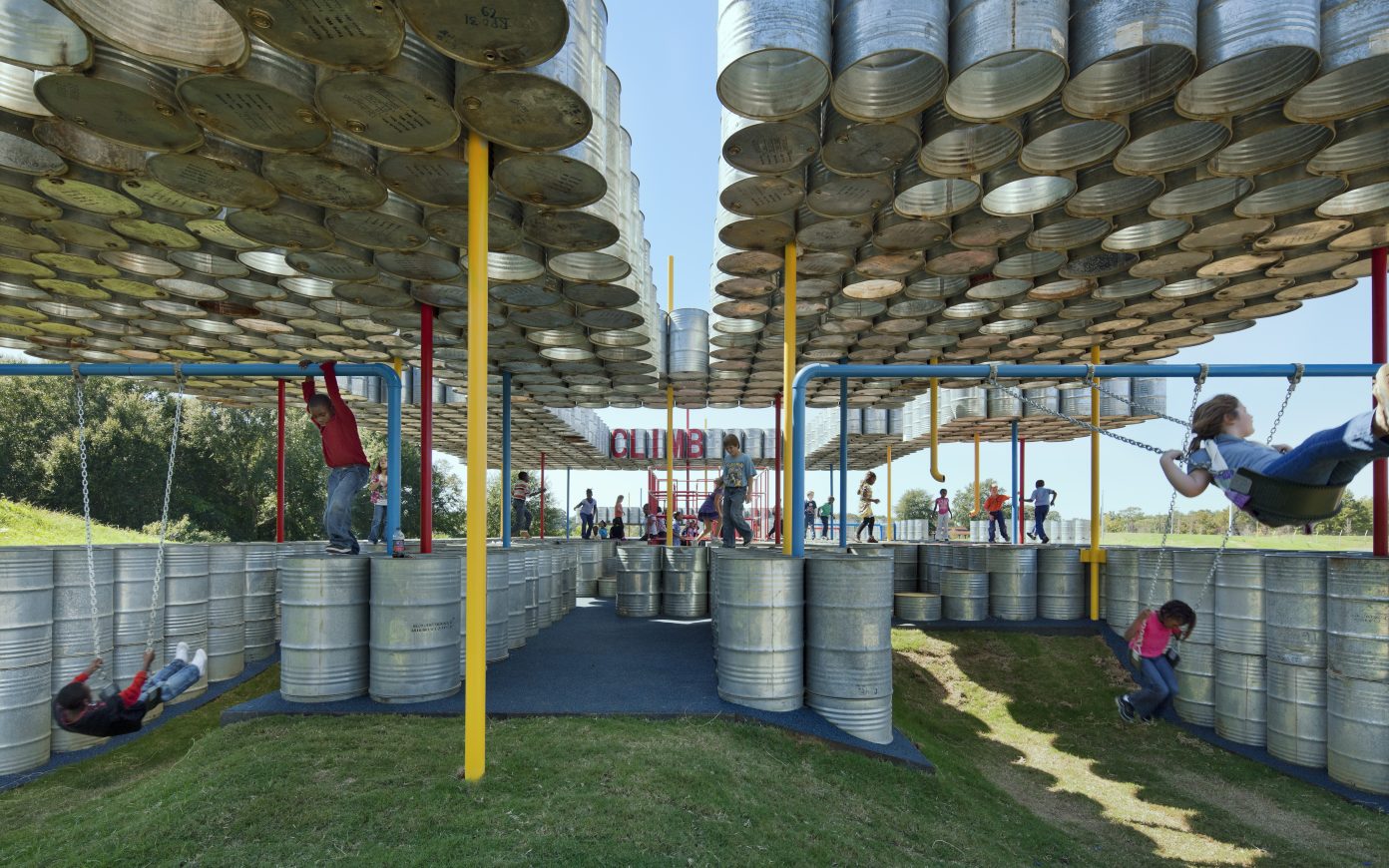Farms in the city
Stream: On the subject of low density, can you tell us more about the phenomenon of urban farming in Detroit?
Dan Pitera: The phrase urban farming is really only being half used. Transplanting a rural farm into the city of Detroit is not an urban farm, that’s a farm. I think the question that we have is what does it mean to have an urban farm. Right now, because there’s so much available land and so little opportunity for people to get fresh food within the city of Detroit—there are great grocery stores but they’re still limited compared to other cities—people set up some small farms in the city. That’s grown to hundreds and hundreds of little farms and to bigger farms over a few acres. But this is being done along the lines of how a rural farm would operate. What we want to ask is can you create farms that feed people, that can be a part of a community effort, but also be designed as urban farms different to rural farms. We don’t have very many—or any—examples of that at this point, and so our hope is that now that we have farming that’s very successful, we can ask how can we design urban farming that helps to bring about the densities that we’ve been talking about. It definitely has to be on a much, much bigger scale.
There’s one area of the city that many people think of when they think of urban farming and that’s Brightmoor, in the far northwest of the city. They have an area called Farm Way that you can walk around. There is an old abandoned house that’s been painted into a community bulletin board and a house that’s been converted into an amphitheater. As objects, they are wonderful. Is that urban? That’s the question. It’s more than rural. It’s not the country.
Stream: It’s also a way to survive for the people who are living there.
Dan Pitera: Exactly. That is getting back to the other part of my answer, which is that these farms are not only there because of the lack of availability of fresh food, but also because many of them are market farms that can be used for people to make money to survive. Some of them can and are being used for income.
Stream: There is a whole debate on bringing back agriculture closer to cities, for ecological reasons. But do you think that for Detroit it’s only a phase due to the crisis? Because what will happen to these farms if land becomes expensive again, because of real estate?
Dan Pitera: That’s a huge issue, which gets back to your point of stabilization. To get back to the general notion of the framework, the reason why it’s not just a land use plan, a city systems plan, or a public land plan, but that it includes neighborhoods, economic growth, civic engagement, land use, city systems, and public land, is because it’s all of those things need to work together. We can’t assume that because we have put this framework out, the things that we’re talking about now will remain in the future. Talking about evolution, it’s fine if they shift and change. What we’re trying to do, besides coming up with a framework for people to follow, is also to change the policies that will allow for good ideas not just now but also later on. Some of that has to do with gentrification. There are lots of people working hard in the city to make it a better place. Will those people be pushed out in the future because incomes go up and land values go up? A lot of the work that we’re talking about now is also focused on thinking about policy in a more creative way.
The law to make urban farming legal in Detroit was passed in May 2013. So the thousands of farms that we have—we have goats and chickens in Detroit, even cows—were all illegal until then. Now the numbers have grown, but that has been going on for decades. We have to legalize them because now there are so many we can’t ignore them anymore. There isn’t just one organization on urban farming, there are almost ten major organizations working toward this goal—the Detroit Fair Food Network, the Greening of Detroit, and others. That is very different from other cities.











